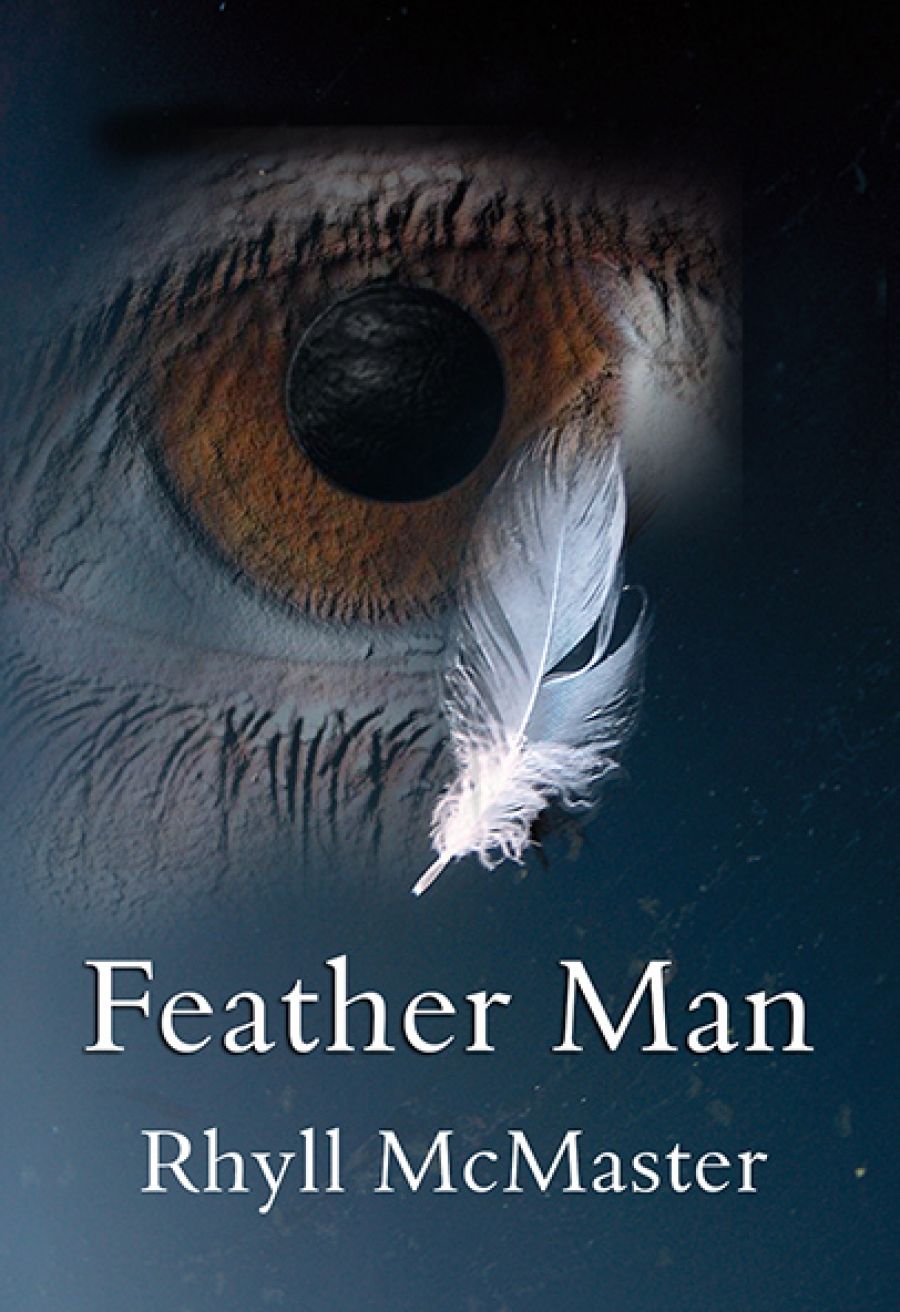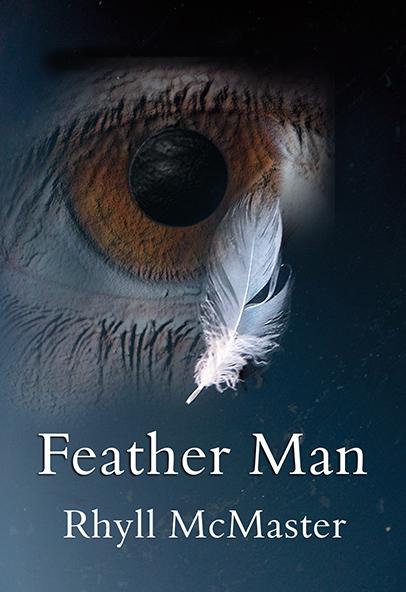
- Free Article: No
- Contents Category: Fiction
- Review Article: Yes
- Article Title: A Cardboard World
- Online Only: No
- Custom Highlight Text:
Rhyll McMaster established her considerable reputation as a poet in the 1970s and 1980s. Feather Man is her début novel. In a first-person narrative, the protagonist recounts her life story from the time when she was a child living in suburban Brisbane in the 1950s until her emergence as a painter in London in the 1970s. It is a Kunstleroman divided into four parts, each named for a significant male character who shapes her relationship to art. The narrator’s name is withheld until near the end, when we learn that, somewhat ambiguously, her classically educated father named her ‘Lyce’, from Horace’s Odes on Love.
- Book 1 Title: Feather Man
- Book 1 Biblio: Brandl & Schlesinger, $29.95 pb, 309 pp
- Book 1 Cover Small (400 x 600):

- Book 1 Cover (800 x 1200):

McMaster is interested in the fragility of identity and the dynamics of personal power. Lyce’s story is harrowing. Sexually abused, and in a dissociated state, she lives in a cardboard world, feeling little. In adolescence, she has a friendship with the irrepressible Christine but never confides in her. Her parents, shallow and self-absorbed, are uninterested in their daughter, and she tells them nothing. Her rage against them is displaced rather than neutralised in the narrative’s portrayal of them as comic grotesques, a manoeuvre Craig Sherborne also deploys in his memoir, Hoi Polloi (2005). Bored with their limited lives and disengaged from each other, the parents can’t be bothered with their child and urge her to spend time in the house next door. Here, she is molested by Lionel, a war veteran. His effect is devastating:
He made me feel as if I was a fake girl, apart from everyone with my heavy secret. I could not join in with the other children, effortless. I was the guilty party who dared not let my guard down. I knew I would be exposed in the next instant.
Lionel robbed me of naturalness. He severed me from the right to grow up easily. He took from me the expectation of good things, and contentment. He stole the mundane, unexamined happiness of ordinary life. He took these with such greed, such self-indulgence and he took them, with a staggering lack of compassion, from a child.
It is the character of Lionel and his association with birds and feathers (the rape takes place in the chook house) that provide the controlling image of the novel; he is the sinister ‘feather man’. All Lyce’s relationships are funnelled through him.
The adult Lyce paints satirical portraits powerful enough to attract the interest of Brisbane’s art world. Unsurprisingly, she is unstable, swinging between abject compliance and anarchic outbursts. Portrait painting nourishes her sense of agency, but at critical moments she finds another in the effects of alcohol. In drink, Lyce sheds the passive ‘fake girl’ carapace to become an active subject. Enabled by champagne, she turns her wedding reception into a carnivalesque farce:
‘I’m Redmond’s Uncle Stan.’ He eyed me with reluctant distaste and some alarm.
‘Ah, so. Bloody old Lionel’s brother. Do you like chooks?’
He didn’t answer so I moved on. I saw a roly-poly man with a camera and headed his way. He reminded me of Peter. My headache, which had started a gentle rebound, gave an extra thud.
‘Hullo, Honey, you must be the bride.’ He smiled. He looked rather sweet and on the instant I became his friend.
‘I think I’m it. Do I look like one?’
‘Yes.’ We looked at each other and laughed. ‘Bit woozy round the edges, but glowin’ darlin’. Here, let me take a shot, just for you.’
Lyce is witty and clever but disconcertingly brittle; she is too damaged to be predictable. She rejects Peter, who would smother her in a cocooning marriage, and chooses self-immolation with Redmond, the grown-up boy next door:
I don’t know what I thought I was doing marrying Lionel’s son. They say innocence attracts evil but I never thought innocence is as simple as that.
I might have thought I was repairing the past or at least attempting to re-write it.
I knew I was after something that that had been stolen from me. I thought Redmond might give it back whatever it was.
Later, ill and abandoned in London, Lyce is rescued by Paul, an urbane older man who, as an art dealer and gallery owner, furthers her career. Ominously, he reduces her name (pronounced ‘Lissa’) to the unexceptional ‘Leesa’. If the conclusion sounds rather tidy and consoling, do not be reassured; the novel closes on a distinctly chilling note. Perhaps this is because McMaster is suggesting that simple rescue is unavailable to a person with so terrible a history. This superb first novel is beautifully written but not for the faint-hearted. In the disturbing genre of Amy Witting’s I For Isobel (1989) and Jessica Anderson’s Tirra Lirra by the River (1978), it is nonetheless in a class of its own.


Comments powered by CComment